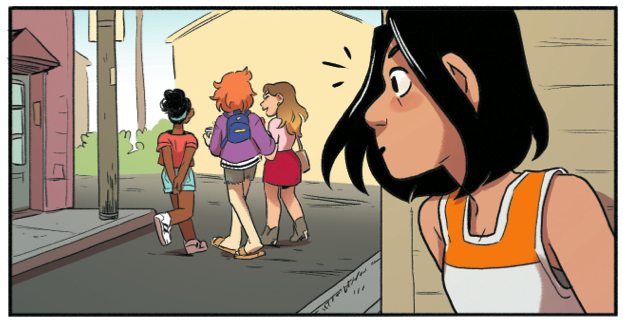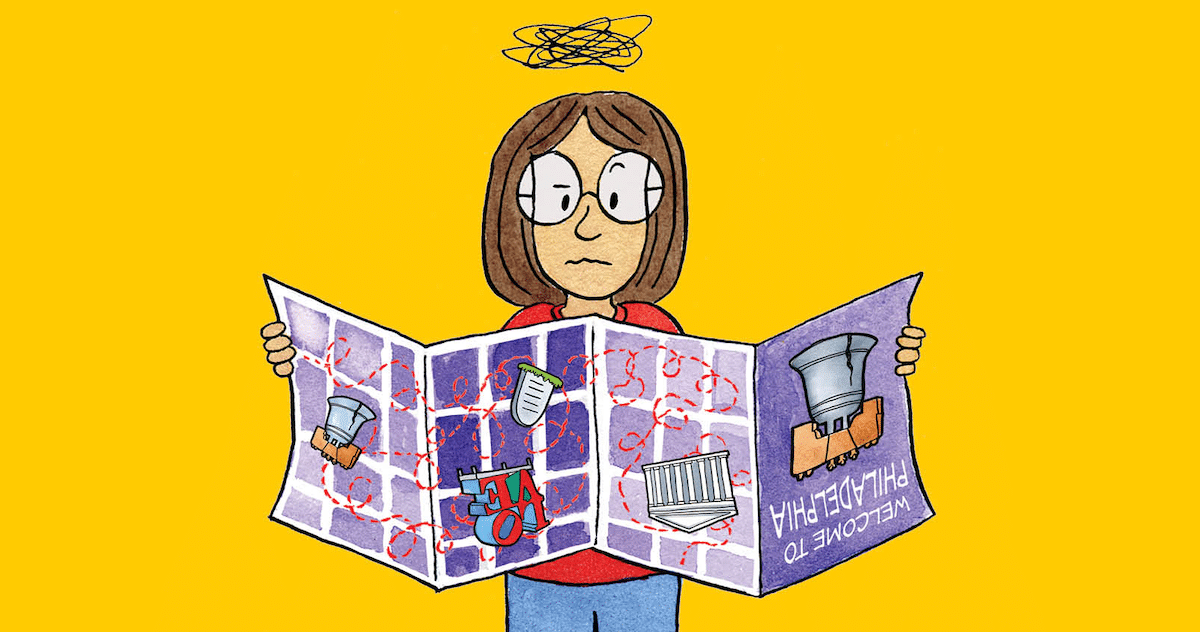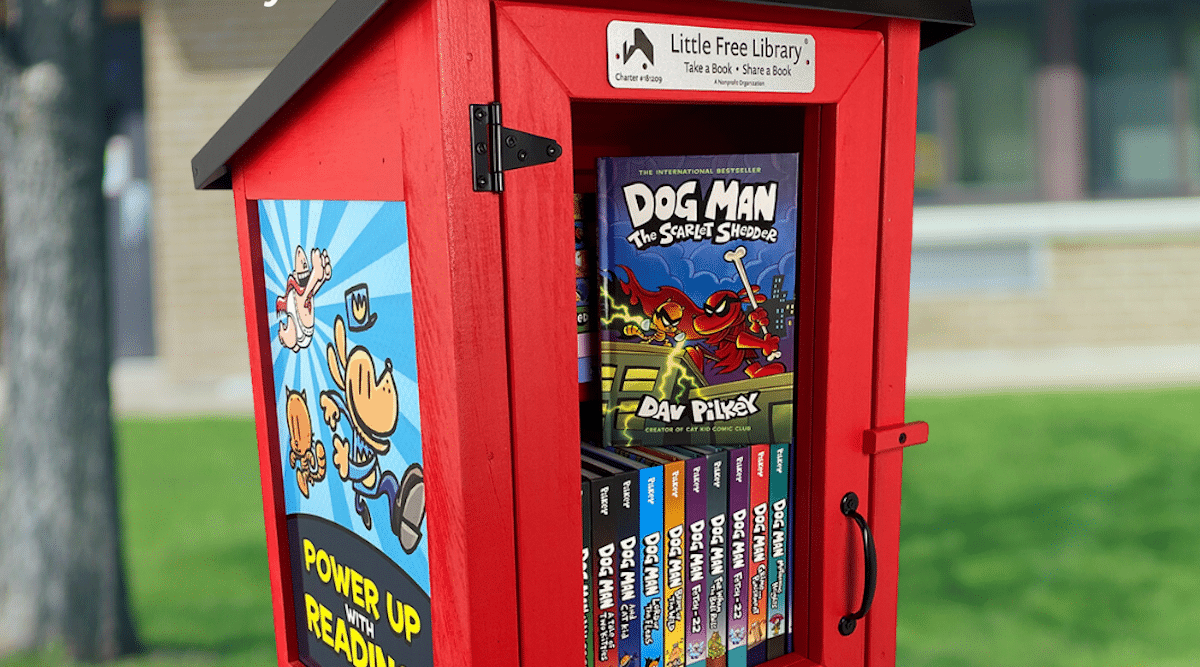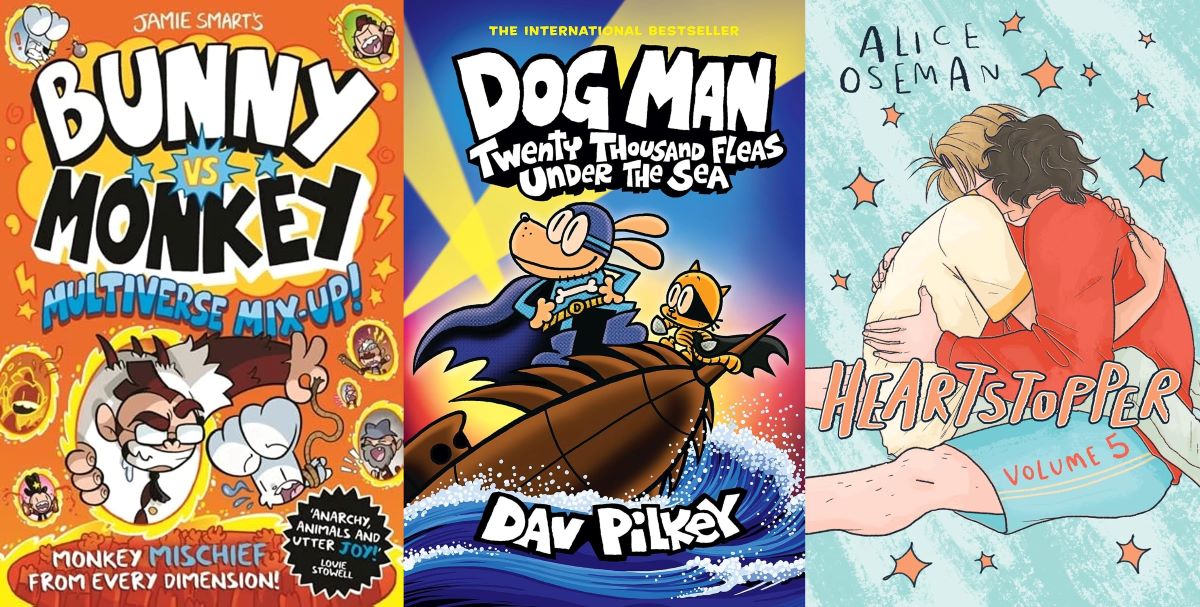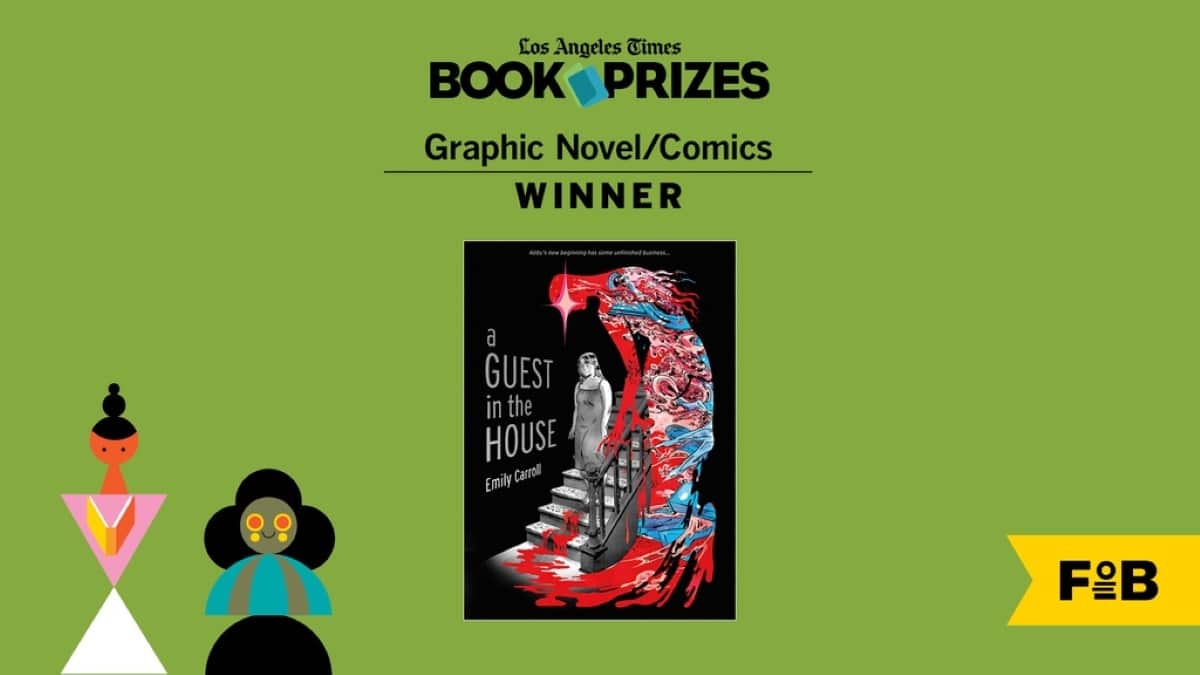 The Girl From the Sea
The Girl From the Sea
Cartoonist: Molly Knox Ostertag
Colored by: Maarta Laiho
Design: Ostertag and Shivana Sookdeo
Published by: Scholastic Graphix
In The Girl From the Sea by Molly Knox Ostertag, the cartoonist charts a course from Middle Grade graphic novels to Young Adult, adding a layer of queer romance to a fantasy frame – an addition that feels like a natural progression (and one that never condescends to the reader).
https://twitter.com/mollyostertag/status/1399761394912817154?s=27
Fantastic Fantasy
Naturally, Ostertag is no stranger to fantasy. However, while The Witch Boy trilogy seemed more focused on the fantastic elements, with the more grounded social components present but comparatively muted, The Girl From the Sea represents something of an inversion, with the social elements more foregrounded than the fantasy.
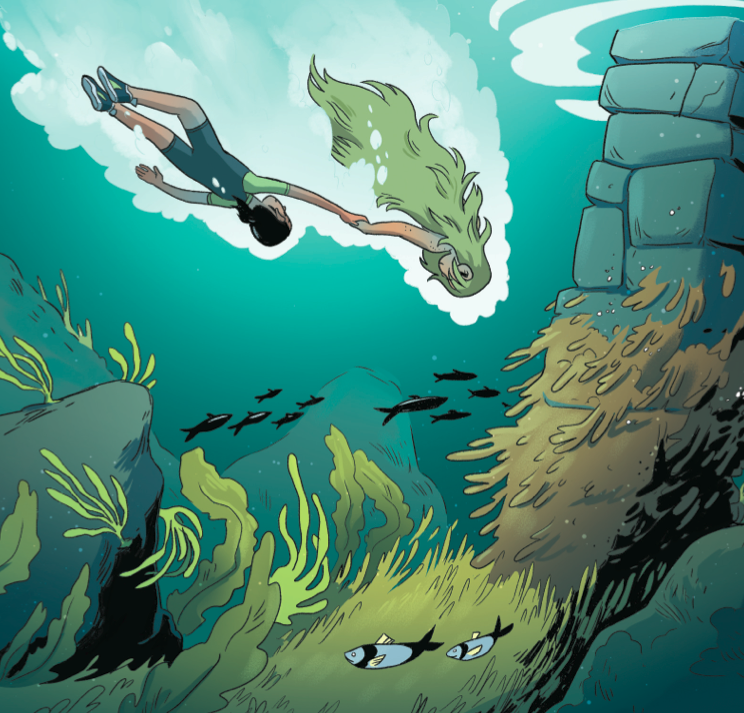
However, rather than make the fantastic elements seem overlooked, this technique instead bolsters them, adding a layer of verisimilitude. And as Ostertag told The Beat when we exclusively revealed the cover for The Girl From the Sea, that verisimilitude is no coincidence: at least in part, it comes out of her experiences spending childhood summers on Wilneff Island in Nova Scotia, where the story is set.
Queer Summer Romance
At the heart of the story are Morgan’s feelings for Keltie. When the story opens, Morgan already realizes that she’s gay, but rather than allow that to steamroll the life she’s built for herself, she has resolved to simply bury those inconvenient feelings until college.
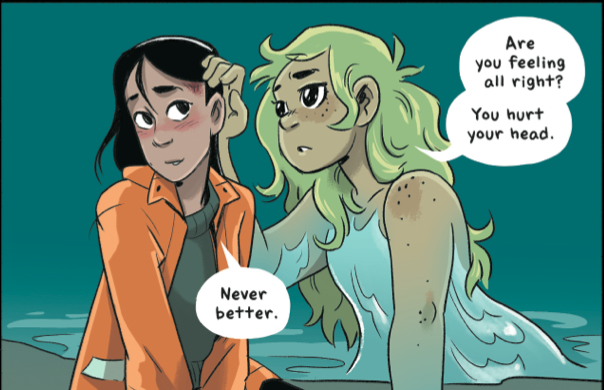
Easy enough, right? Sure – at least until Keltie arrives, and makes queer romance a more immediate (and un-ignorable) concern.
Soon, Morgan and Keltie have fallen into what might fairly be characterized as an archetypical summer romance: spending all their time together, avoiding everyone else in favor of one another, and keeping secrets. What’s great about this aspect of the narrative is that both the good and the bad are included: while Morgan may be swept away with the tides of love, we also see her ignoring her friends.
Group Chat
Speaking of Morgan’s friends, they serve to balance out the narrative, and are largely represented in the text through interstitial group chat segments. While Morgan is (most often) included in these convos, as she becomes more embroiled in her romance with Keltie, she is less often a participant.
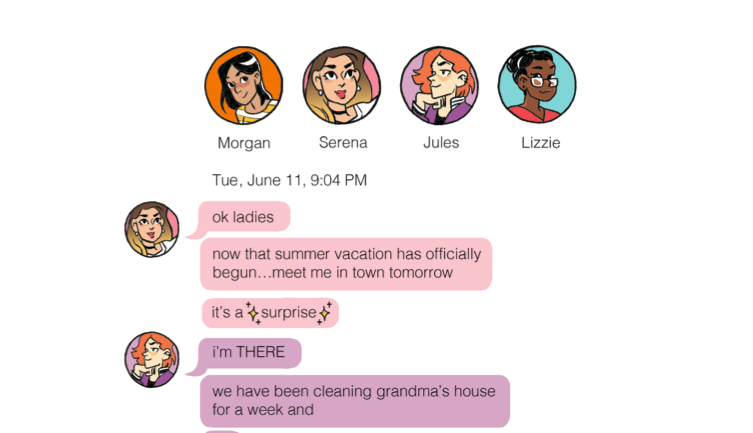
These group chat conversations work for a number of reasons. First, they’re a literal demonstration of the fact that the world continues to move on even while Morgan and Keltie are lost in one another – an essential perspective that we weren’t going to be getting from the two main characters! And second, it serves to give more dimension to the graphic novel’s supporting cast.
Plus, it’s a clever technique for both anchoring the graphic novel in the present and simultaneously delivering easy exposition.
The Girl From the Sea
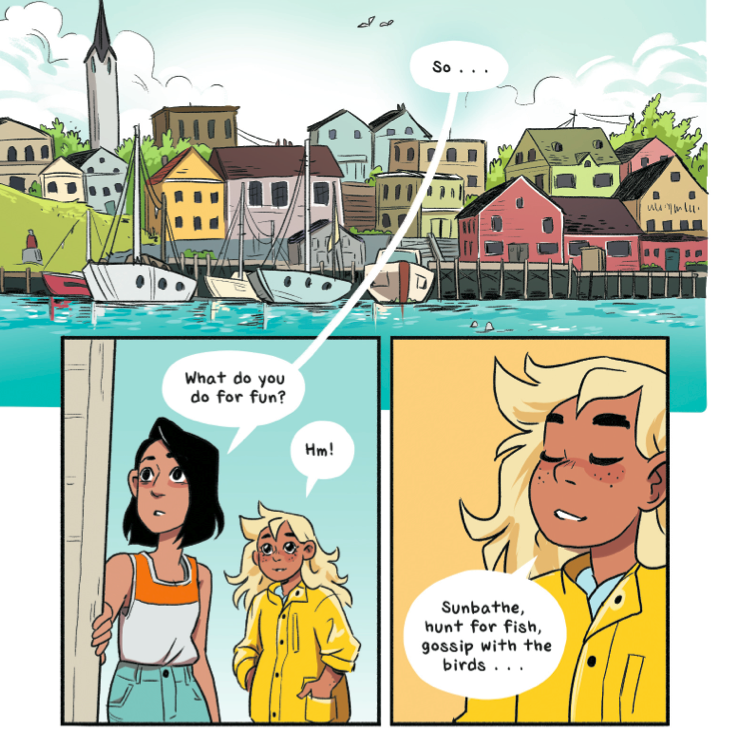
The Girl From the Sea is a story built on cycles: the seven-year cycle, the season cycle of the summer, the cycle of finding romance, the cycle of finding yourself. It succeeds because it recognizes the beauty in every stage of those cycles: not just the thrill of beginning, but the joy of the journey, and the bittersweet but wholly necessary nature of conclusion.
The Girl From the Sea is available beginning today at your local bookstore and public library.


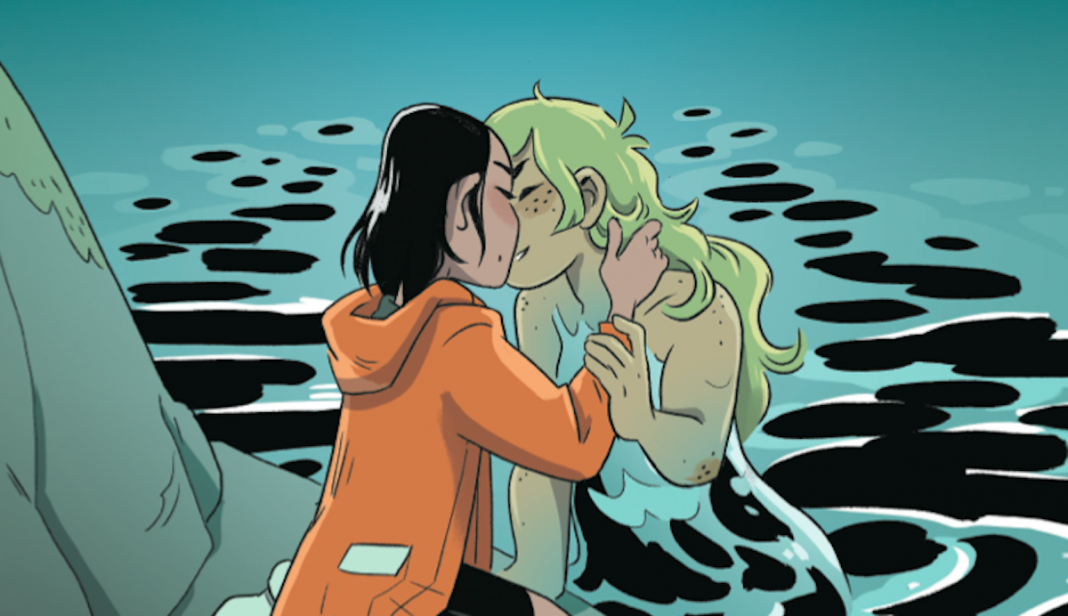
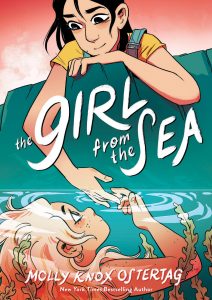 The Girl From the Sea
The Girl From the Sea